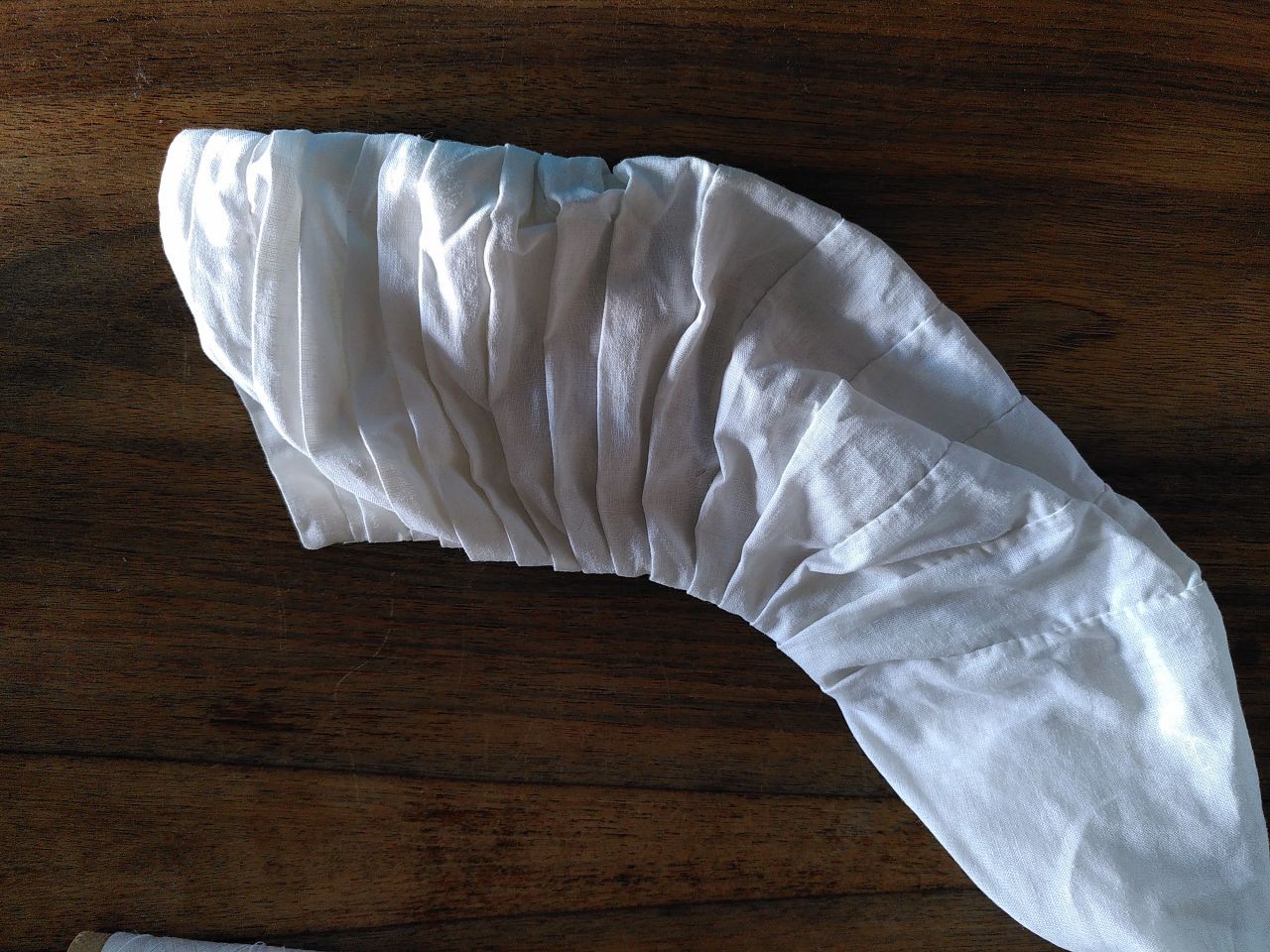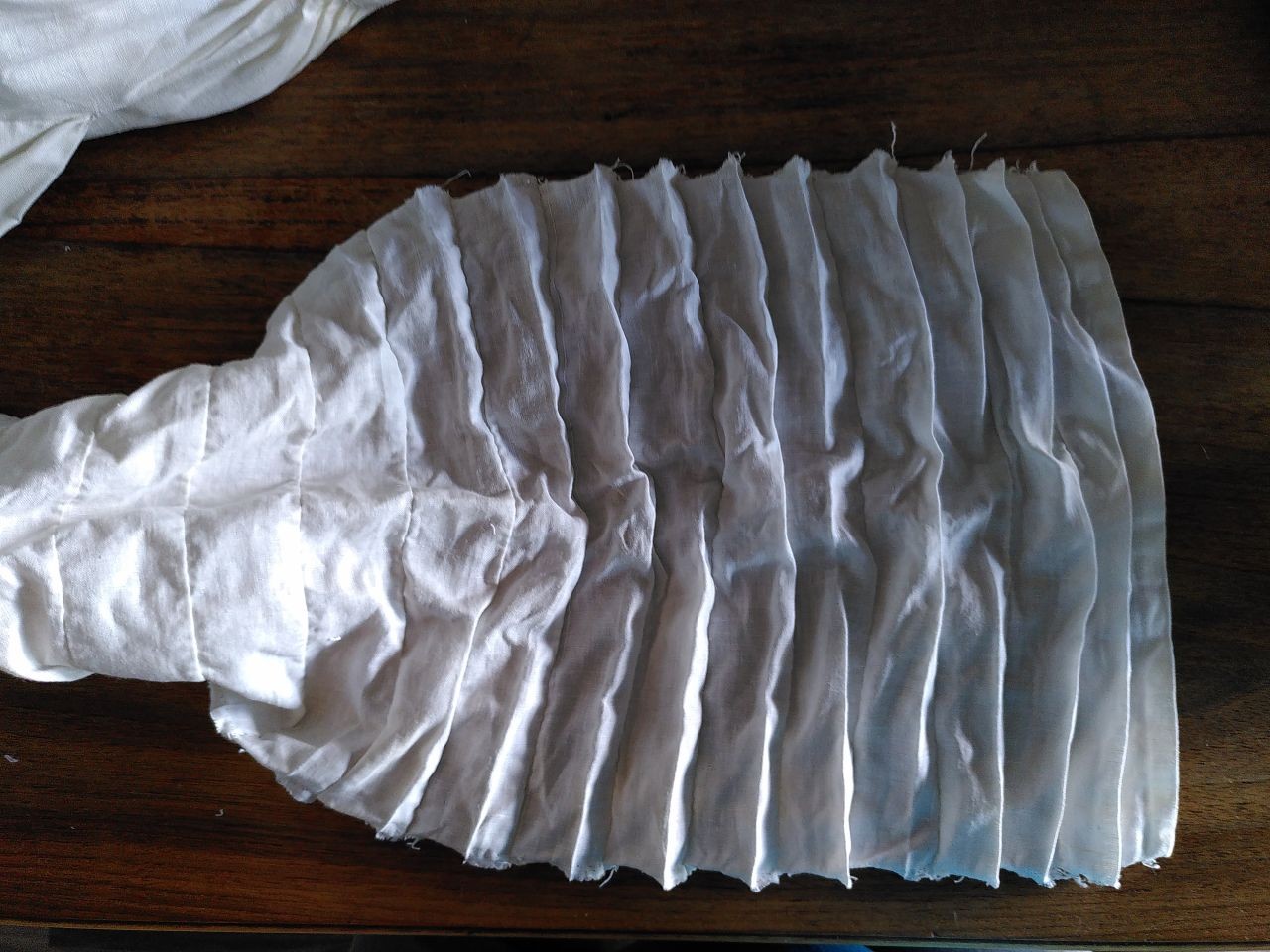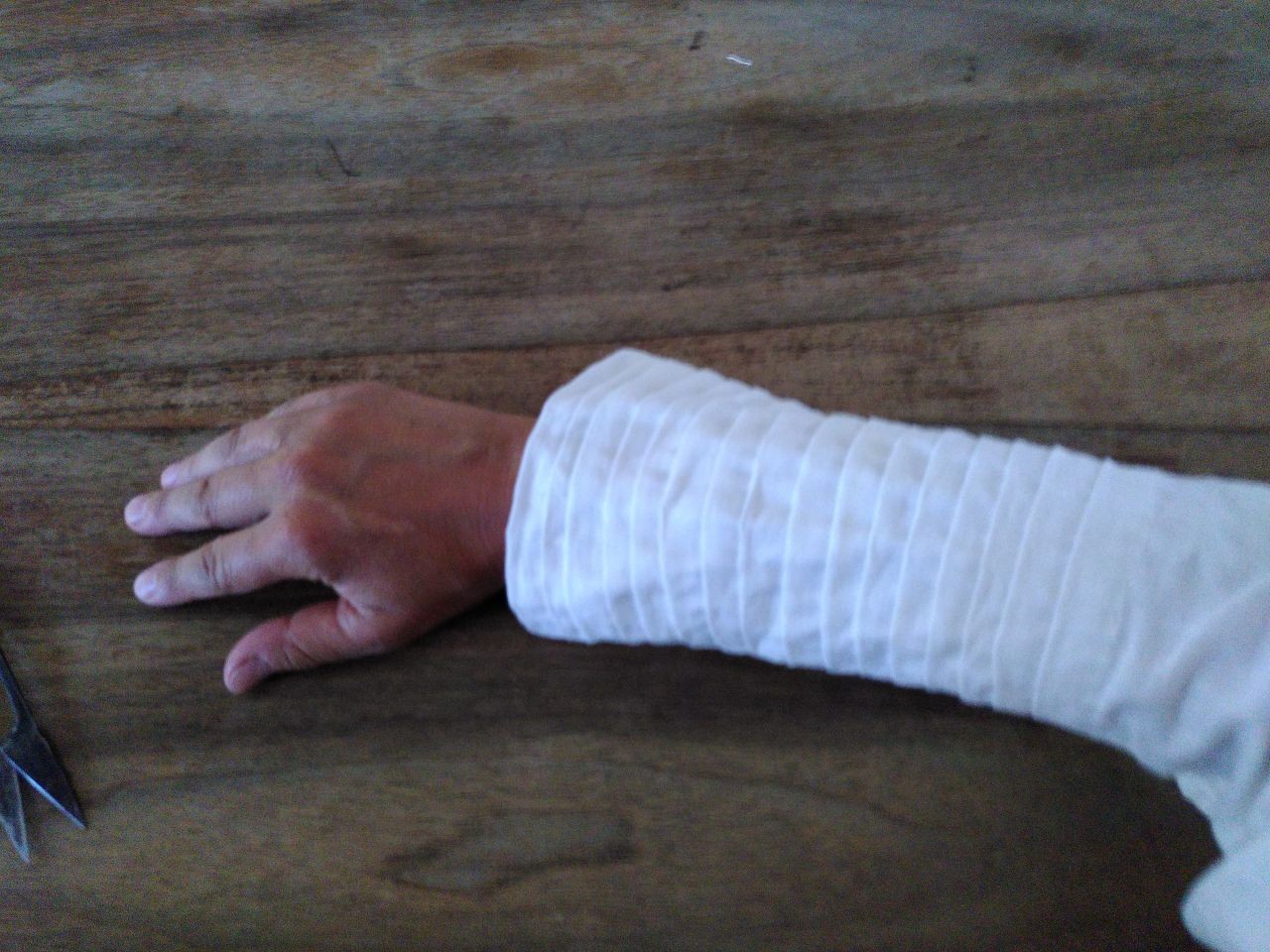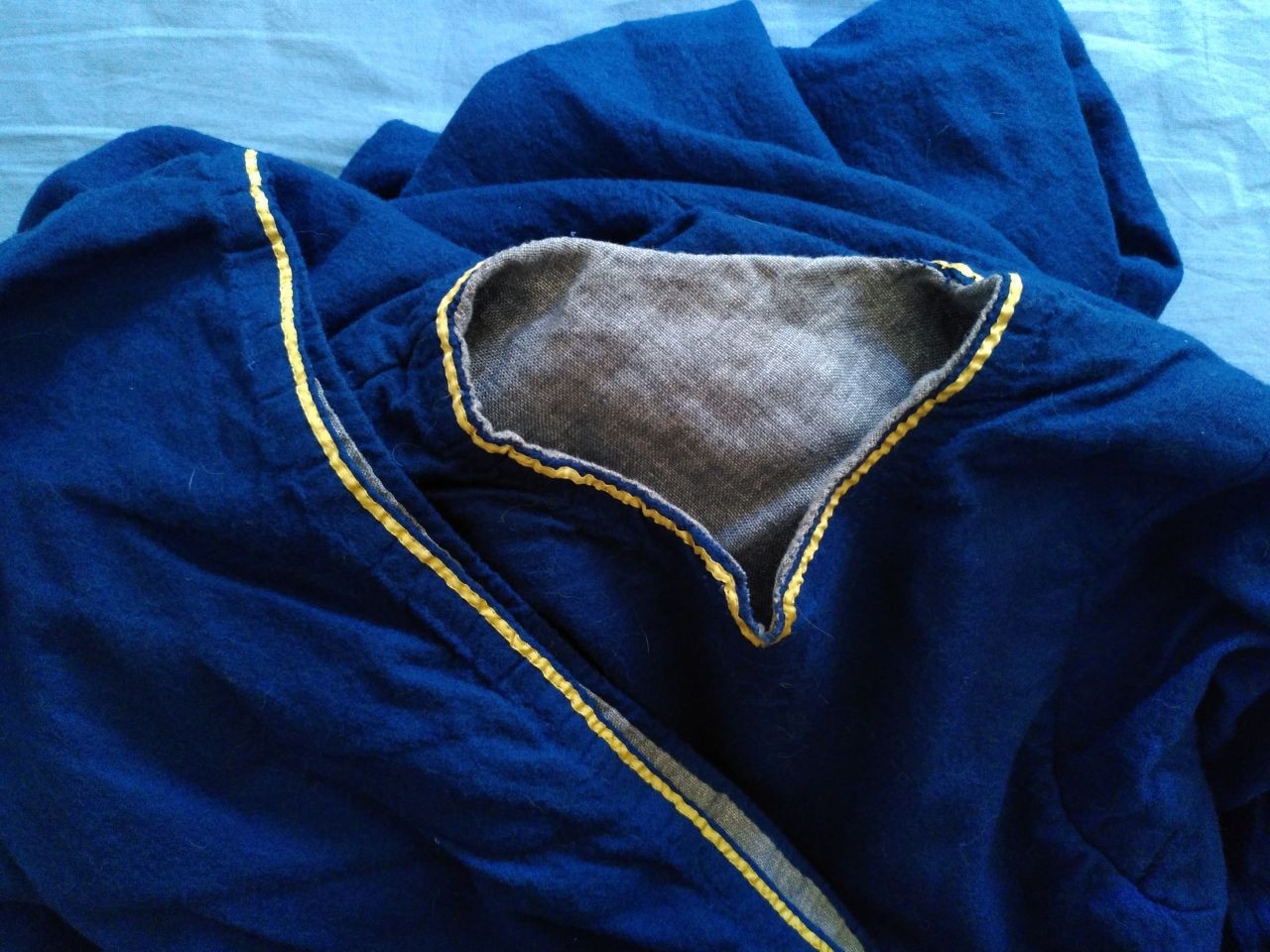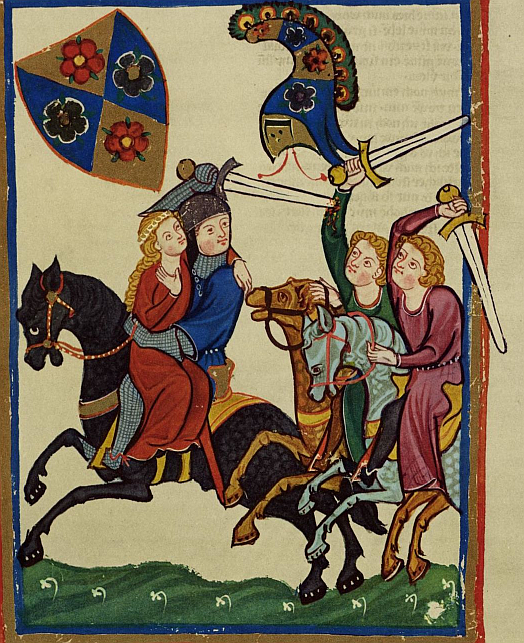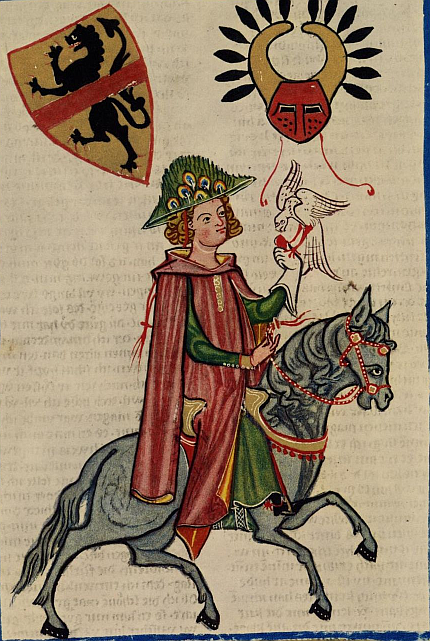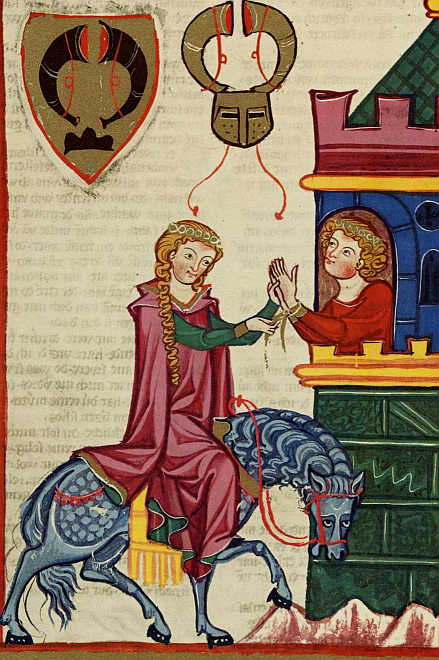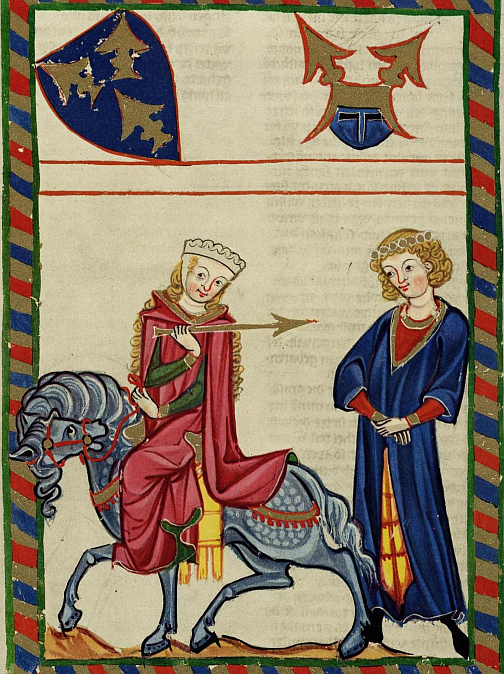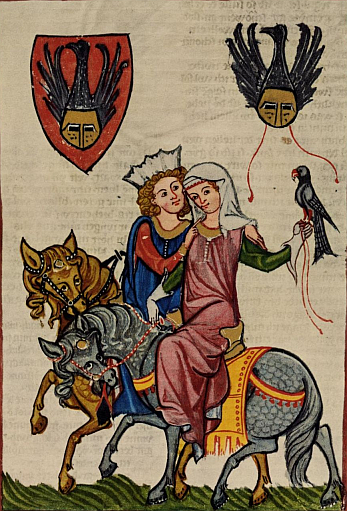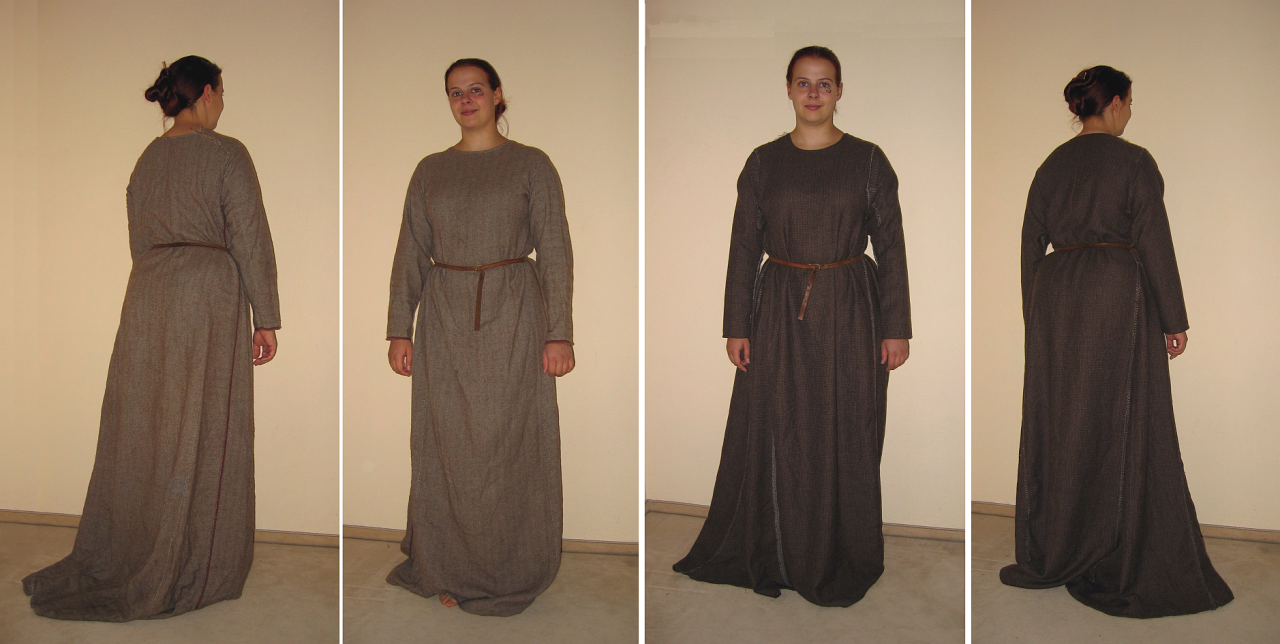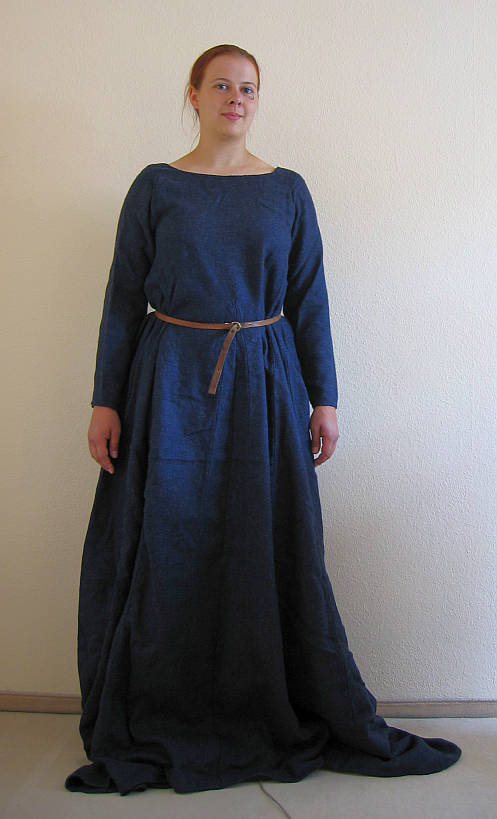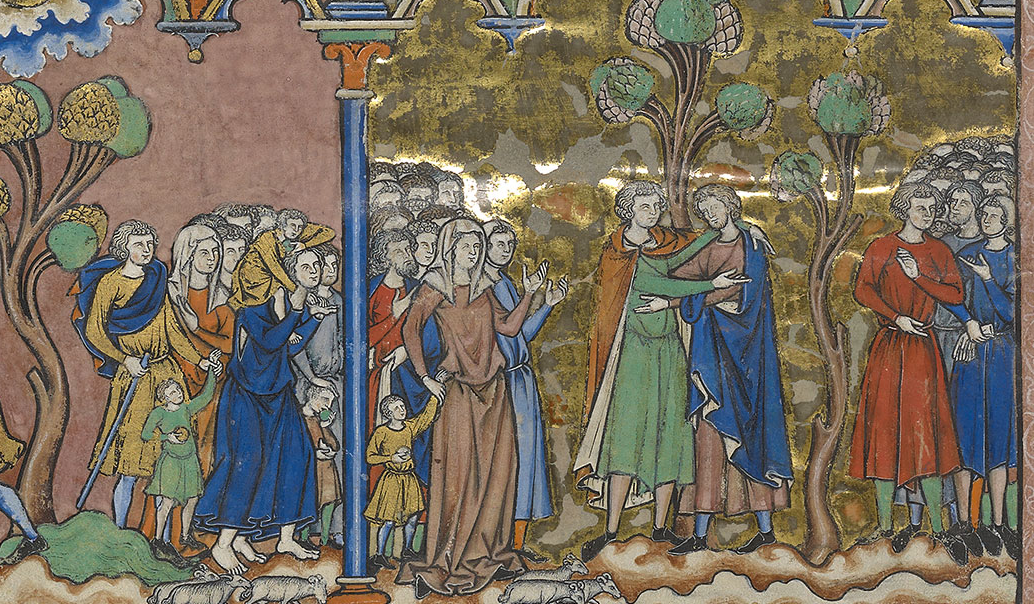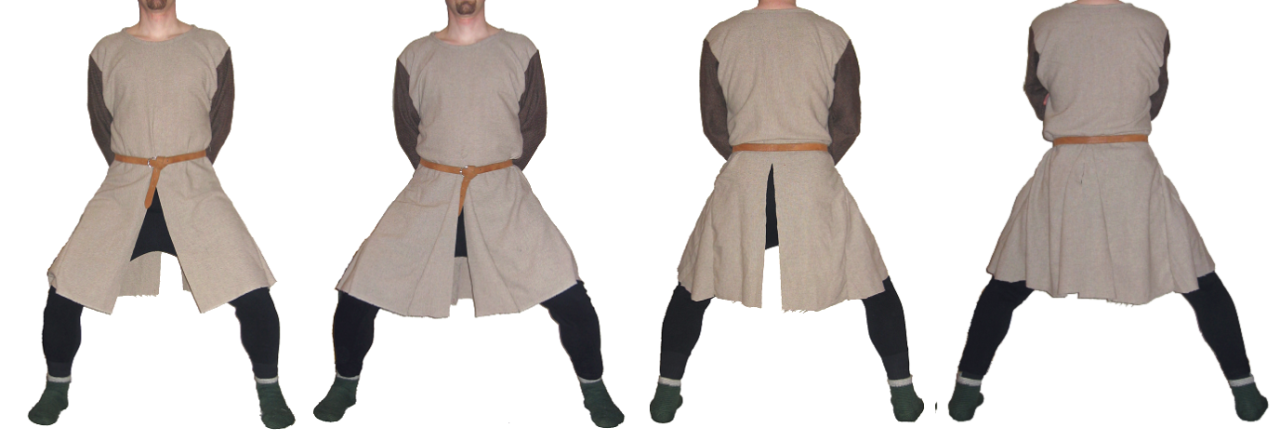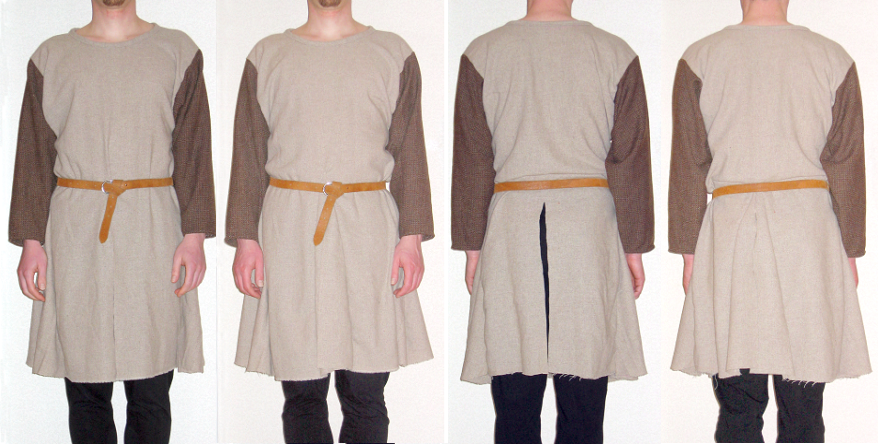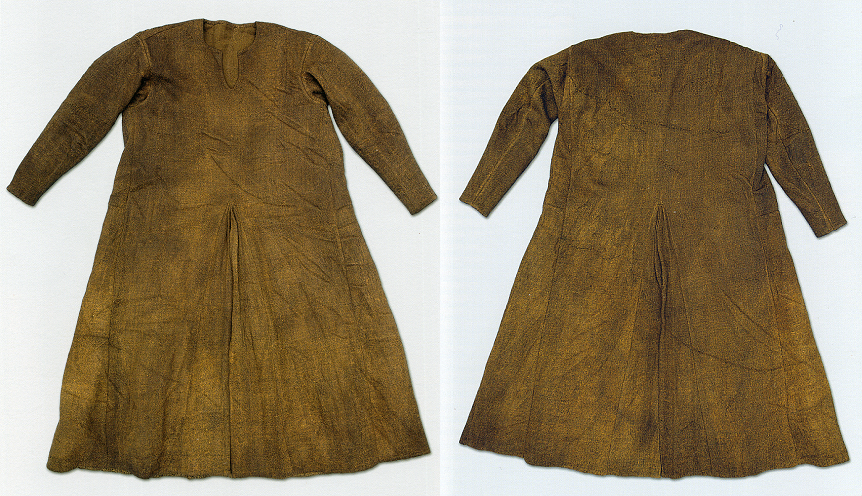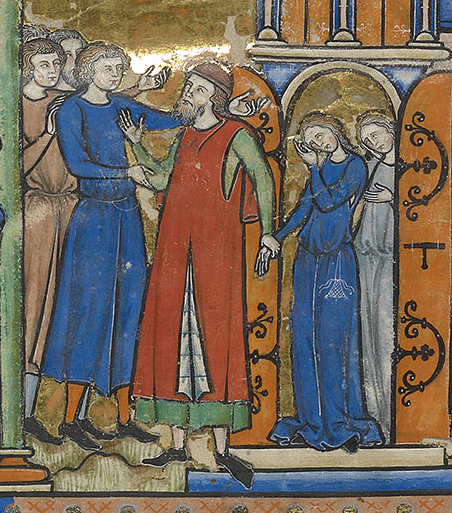...but wait, there's more!
Florence commented on the post about Herjolfsnaes 42 (with some issues thanks to the blog software, it seems it is very non-mathematic-symbol-friendly):
I agree that if a person is buried wearing a garment does not prove that they also wore it in life - just that their family or community deemed it proper for them to be buried in them. And then, as you mentioned, there are the Greenland finds, where the corpses were wrapped in the garments and are not wearing them, so that's another thing altogether.
My point is: Proving a negative empirically can only be done on a large amount of data. Women never wearing short garments: Sure thing, loads of pictorial evidence for that. Women not wearing garments with a riding slit: Also loads of pictorial evidence, including the pictures of women riding astride. Now, women never wearing long gowns with a closed (as in sewn shut) middle gore: I cannot tell from a picture if there is a closed middle gore or not, could you give me a few examples?
In extant garments, we only have a few examples where we are quite sure those were worn by a woman. So, out of less than 5, none have a middle gore. But that's not a lot of data.
(Granted, I'm a physicist, a sample size of n=5 tells you nothing in my field)
I don't even know an extant long garment with a closed middle gore that is a associated with a person/corpse of any gender.
..
First of all - yes, that is not a lot of data I am working on. Unfortunately, we do not have a lot of data to work on, and I completely agree that a sample size of five or less is very, very scant.
When I looked for garment evidence for my thesis, I got about 175 items altogether, from most of Europe (with limited things from Finland, and next to nothing from Eastern Europe) and for the timespan of 500 to 1500. I tried to include extant pieces that could give information on how something was tailored, so no pieces that have just a piece of seam or hem. There's probably some more that I missed, and in the years since, some more pieces have been found (Lengberg for instance), but I'd surmise that we haven't gotten up to significantly above 200 items.
Garment finds are really, really rare.
And now for the really juicy bit... is it possible to tell from the medieval images whether there's a middle gore sewn in, or not?
There is, to my eyes, a subtle difference between how folds in women's dresses and in men's tunics are shown. It's really subtle, though, and it took me a while to sort of put my finger on it. The difference gets less pronounced when the dress is wider, and it's not visible if the dress is tucked up into the belt as to fall in different folds.
What I have only seen shown on women's dresses in artwork is the V- or U-shape of folds in the front part of the dress. These can both be seen on my dress reconstructions of St Elizabeth's and St Clare's dress, here:
You can see the U-form of the folds on the left dress, and a more subtle version of the folds running together in the front on the right. In comparison, the folds on the Herjolfsnes 42 look like this:
The folds are running straight downwards to outwards here.
So how does this compare to medieval images? Here's one example:
Maciejowski Bible, The Morgan MS M.638, fol. 4v. See it in full size here: https://www.themorgan.org/collection/crusader-bible/8
On the men's tunics, the folds go straight down. On the women's dresses, the folds run towards the middle. At least that is how it looks to me - and yes, I will say again: the difference is subtle. Similar fall of folds can be seen on the other folios of the Maciejowski. (I'd like to go and hunt for more similar things in other manuscripts now, but unfortunately I'm running out of time for today.)
On many of the images that we have, it's not possible to tell how the folds run, or if there is a distinct difference between the male and female dress. Female dresses are often tucked up into the belt (not just drawn up, but a side fold of the dress taken up and stuffed in), and that will severely change how the fabric drapes and hide any "natural" front folds. Quite often, some mantle or cloak also hide what goes on in the front, for both men and women.
So in conclusion... I would not call what I see on the images as hard evidence, but to me, this impression of a subtle difference between how the women's dresses fall and drape, and how the men's tunics, especially those longer than knee-length fall and drape, is a very strong hint towards a different cut, and I would interpret that as the middle gore for the men's garments and no middle gore for the women.
What's your impression? Can you see a difference?




